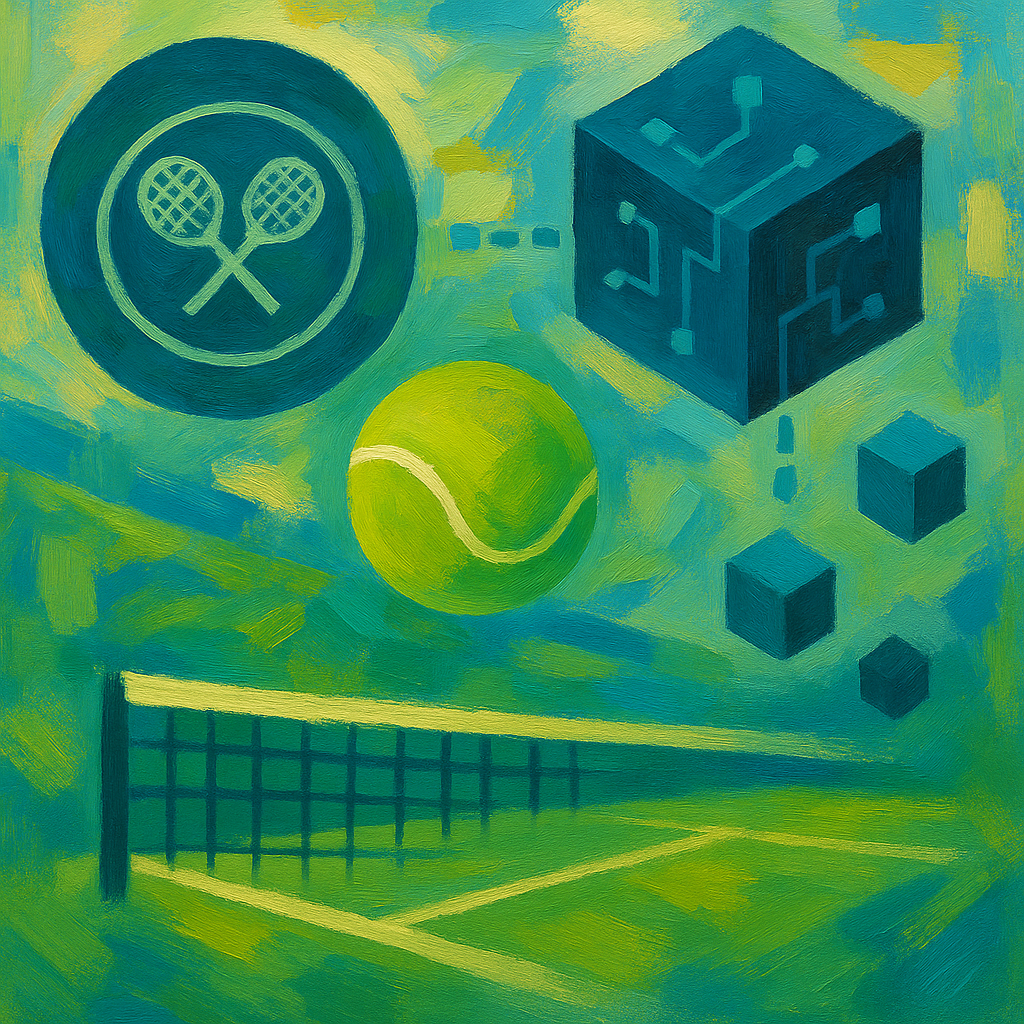By Pritish Beesooa – Head of Blockchain and Web3
In a world caught in digitalisation and spinning rapidly toward decentralised everything, some institutions hold tight to tradition. Wimbledon is one of them. With its manicured grass courts, white dress code, strawberries and cream, and stoic British charm, it has long stood as the sport’s most sacred tournament and with justification- unchanging, elite, historic and profoundly analog in spirit.
But even tennis most precious tournament is not immune to time. Beneath the surface of its history lies a quiet pressure to evolve. Not for the sake of trend, but for relevance. And perhaps, more importantly, for resilience.
As Web3 technologies slowly but surely begin to redefine how we engage with culture, data, and even ourselves, a provocative question emerges: what would the Wimbledon Championship look like if it embraced the logic of blockchain, not just as infrastructure, but as a philosophy?
The answer is not about replacing tennis tradition with tech gimmicks. It’s about reimagining what it means to be a fan, a participant, a contributor – even a citizen – of sport.
Welcome to Wimbledon 3.0.
The Rise of the Tennis Citizen
In the traditional model, a Wimbledon spectator is a temporary presence. They buy a ticket (via an LTA ballot or not), enter the grounds, observe history unfold, and leave. Their experience ends at the gates. Their legacy disappears with the day and only re-emerges as anecdotes during fleeting conversation across the numerous courts and clubs of social tennis. But in a blockchain-powered model, a new figure emerges: the tennis citizen.
This isn’t a metaphor. It’s a digital identity backed by self-sovereign credentials – an on-chain ledger of one’s presence, participation, and contribution to the tournament. Instead of being passive observers, tennis citizens become authenticated actors in Wimbledon’s unfolding narrative.
Their attendance is verifiable. Their travel footprint is measurable. Their environmental impact, voting history, and content creation are embedded into a public yet privacy-respecting record that grows with each visit. They don’t just attend Wimbledon; they build a relationship with it. Over time, their digital presence becomes as real as their physical one.
Sport Meets Environmental Accountability
One of the most urgent challenges facing modern events (from concerts to conferences to sports) is their environmental footprint. Wimbledon, with its half a million visitors in just two weeks, is no exception. The carbon output generated by international flights, food and beverage consumption, energy use, and waste is vast and largely invisible.
But blockchain can make it visible and actionable.
Imagine a ticketing system that does more than grant access. Before a fan even steps onto the grounds, their journey is assessed. The carbon estimate of their transport, accommodation, and food preferences is calculated in real-time using verifiable data. At checkout, they’re presented with transparent offset options or incentives to reduce impact entirely. Those who travel via bike or rail, for instance, might receive on-chain eco-badges. These digital markers of sustainable action could be used to access discounts on food, merchandise, or future tickets.
On-site, the infrastructure is responsive. Composting bins are fitted with scanners to verify correct disposal. Visitors who sort their waste accurately receive tokenised micro-rewards. Vendors who source locally and operate with reduced plastic are publicly credited on the blockchain, building a verifiable, accountable supply chain.
In this model, sustainability is no longer a behind-the-scenes operational metric. It becomes a publicly shared, gamified, and financially meaningful dimension of attendance.
The Emotional Economy of Experience
One of the strangest things about modern sport is how much of it slips away. You attend a historic match. You scream. You cry. You feel something unforgettable — but when you leave, you take only a programme and a photo on your phone.
In a decentralised future, memory itself becomes an asset.
Let’s think hypothetically. Every fan could receive a digital token linked to the specific seat they occupied during a significant match — a geo-locked, time-stamped proof of experience. Paired with smart wearables, their biometric data — heartbeat, galvanic skin response, vocal enthusiasm — could generate a dynamic, abstract NFT that visualises their excitement in real time. These tokens would live permanently in their wallet, not only as memorabilia, but as proof of emotional presence.
If shared on a platform, these moment-NFTs could gain cultural value. A fan’s reaction to a historic final-set tiebreak might be remixed into community art. Personal match memories might be stitched together into a community documentary, co-authored and co-owned by the fans who experienced it from hundreds of vantage points.
The Wimbledon archive, traditionally managed by the club and its broadcast partners, would become decentralised, intimate, and alive – shaped by the many, not just the few.
Making Money at the Championships as a Visitor
In the Wimbledon 3.0 vision, attending the tournament doesn’t just cost money. It can generate money, too.
Consider your journey through the grounds. What you eat, where you walk, how you participate at the Championship as a fan produces valuable data. But unlike in the Web2 world, this data isn’t harvested and sold behind your back. It’s yours. And if you choose to license it to researchers, sponsors, or advertisers — you earn from it.
You might also be rewarded for your creativity. Fans who write insightful match recaps, post engaging content, or participate in live trivia sessions could receive token stipends. Those who create Wimbledon-themed digital art such as remixing footage, stats, or crowd noise might sell their work on a curated, event-specific NFT marketplace, earning royalties with each resale.
Fans could trade “ViewFrames” – unique NFT snapshots of their seat perspective during a key match – or even fractionalise them, creating micro-ownership of digital Wimbledon history. There’s potential for profit, yes, but more importantly, there’s potential for cultural recognition.
The fan is no longer a data point. They are a co-author of the event’s cultural value.
A New Layer of Governance
While the All England Club is unlikely to relinquish control of the tournament itself, there’s space for a Wimbledon DAO to emerge alongside it. This decentralised organisation could be made up of NFT pass-holders, verified tennis citizens, long-term fans, and even players and coaches.
Together, they might decide how to allocate a percentage of tournament profits. Perhaps supporting youth tennis in underserved regions, funding open-source sports tech, or launching sustainability pilot projects. They could vote on the future of the fan zone, propose new accessibility solutions, or curate community art exhibitions tied to the tournament.
Governance becomes not a spectacle or a token gesture, but a genuine platform for civic expression embedded within the rituals of sport.
Reclaiming Legacy Through Participation
Wimbledon has always been about excellence. Precision. Control. Think Novak, Roger and Serena. But control can coexist with creativity. In fact, that may be the only way legacy survives in the 21st century by inviting participation without compromising integrity.
Let us be clear. The decentralised model doesn’t threaten the values of Wimbledon. It enhances them – transparency, fairness, accountability, community, longevity. Wimbledon 3.0 is not a branding exercise. It is a fundamental rethinking of what it means to be present. To be remembered. To belong.
In this ever changing world, a fan does not leave Wimbledon with only a memory. They leave with proof. With value. With a stake. They walk away as a citizen of a living tradition, carrying their role in the tournament not just in their hearts but on the blockchain.
And that may be the most powerful innovation of all.











